How to Draw a Human Heart
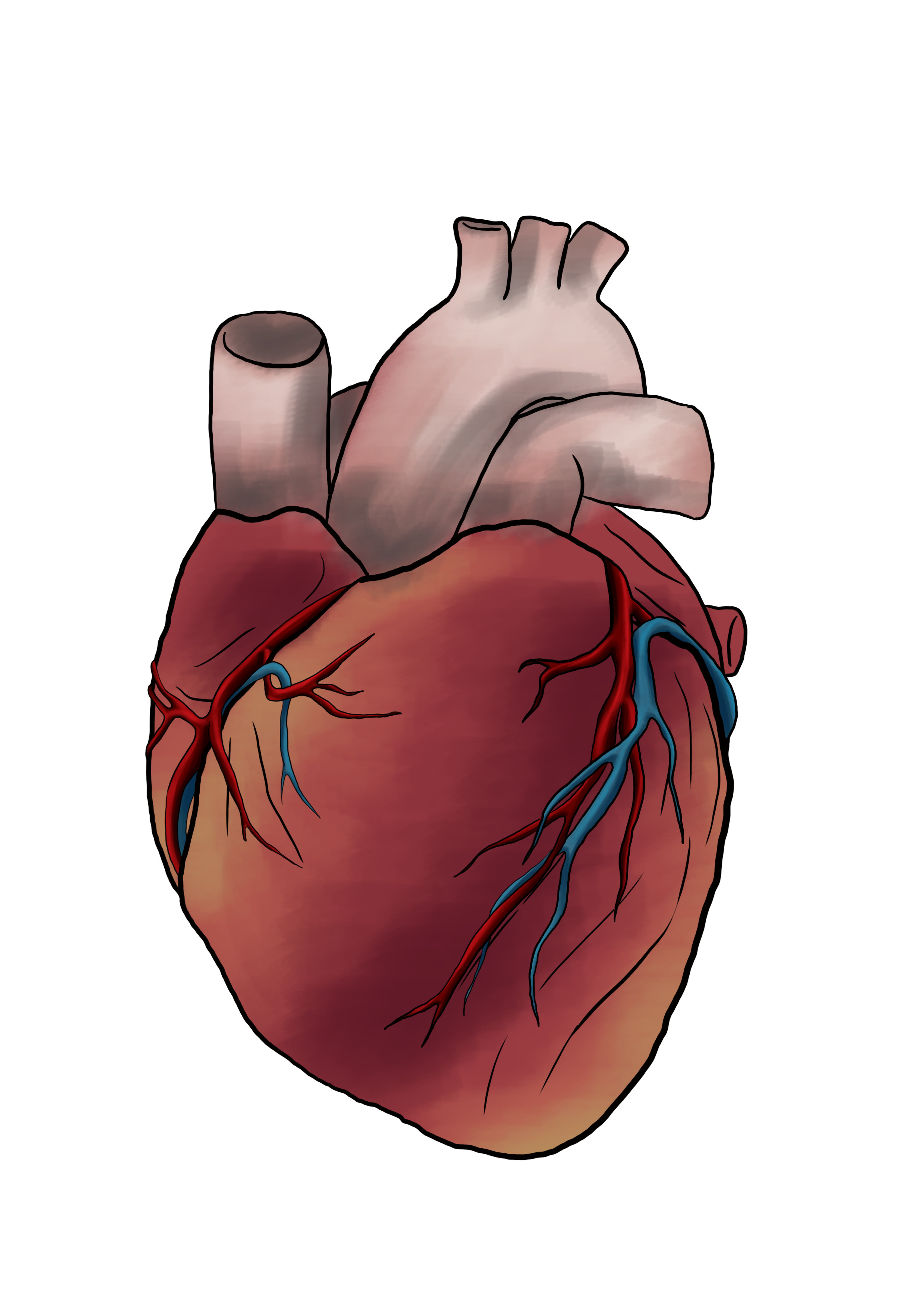
In this article, we will see how to draw a human heart. But be careful, not in a cartoonish way, but realistically, so I will give you a little anatomy lesson.
Indeed, it is necessary to understand what we are drawing and to know how the object that will appear on our sheet is composed, therefore, I am going to show you the approximate anatomy of the heart (we are not in the medical world so aside from knowing the main parts, the rest is not of special interest to us), but don't worry, it will be quick and painless! ;)
STUDY OF THE ANATOMICAL HEART FOR DRAWING
To begin with, what is the heart?
The heart is simply the engine of the body (there is an article that discusses how to draw a man's body, if you wish ;) ). It is the organ that will supply energy to the entire body and enable the other organs and functions of the body to function.
It is located in the thorax, between the two lungs and is about the size of a fist.
It is most simply represented and associated with the shape of an upside-down triangle.
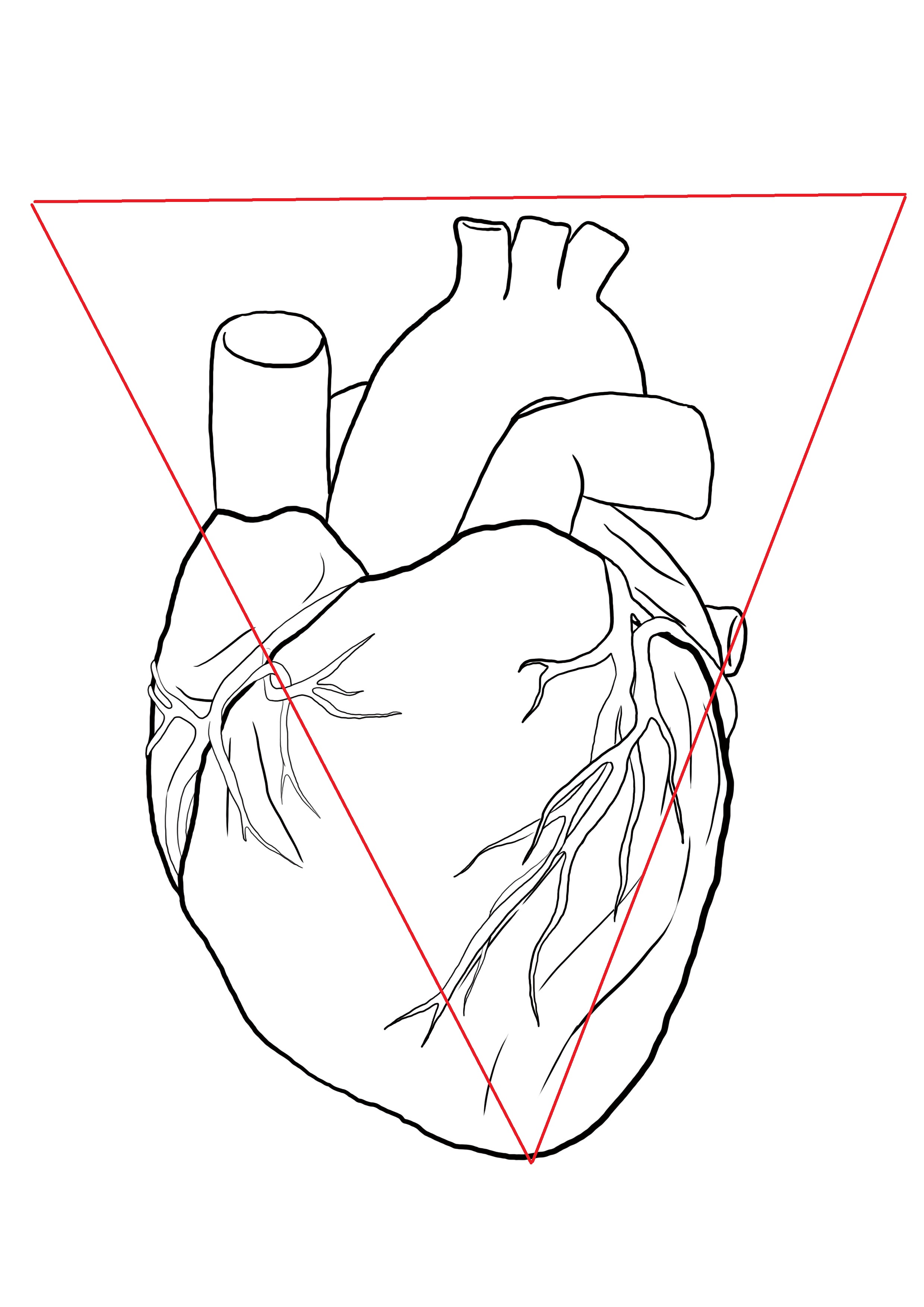
For this article, I will use the names of the different parts that make up the heart.
And so as not to lose you, I have made you a quick diagram with the names of the main parts, those that we must know in order to draw it more easily.
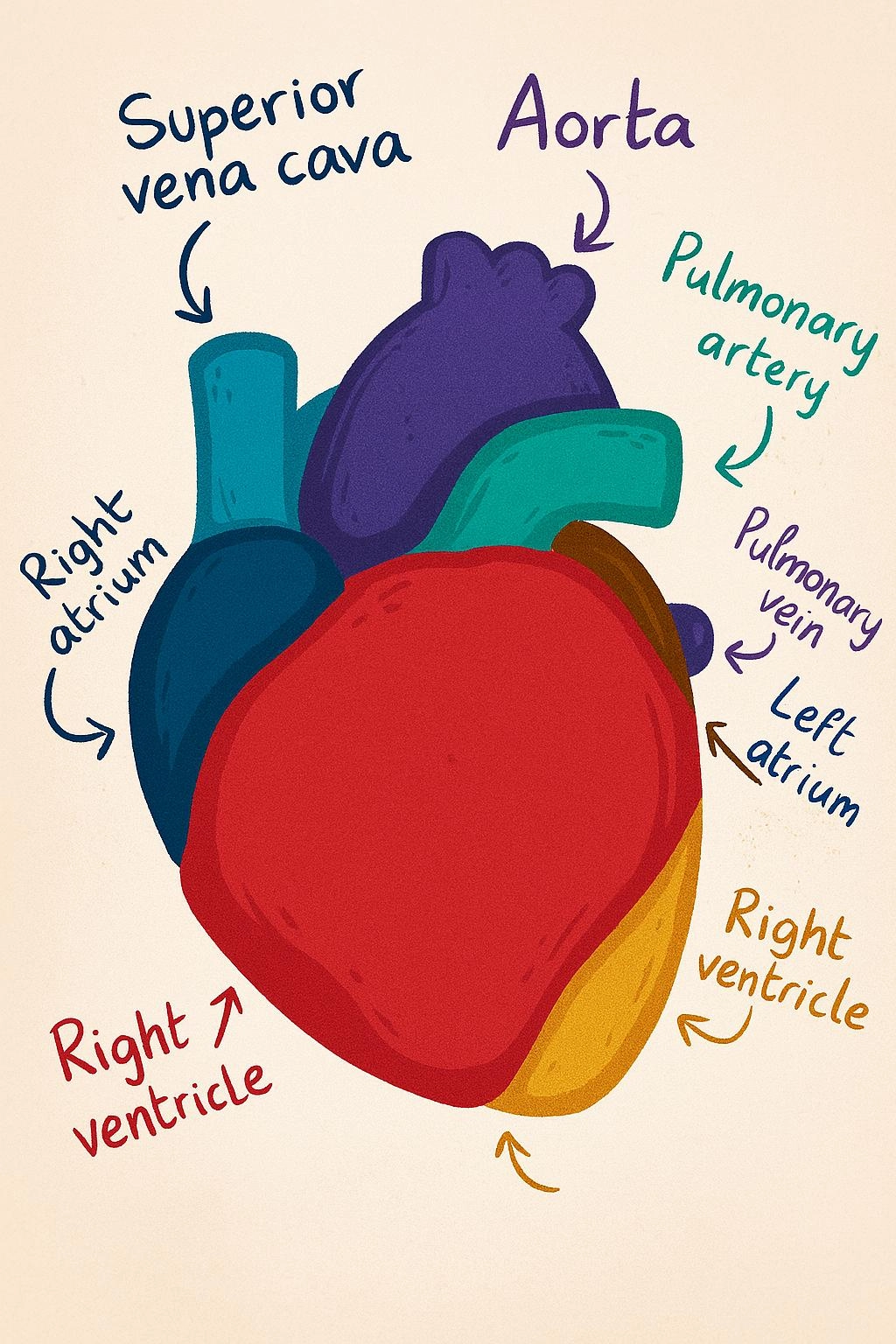
Now that you know what each part corresponds to, we are going to start our drawing...
As always, we start with ...
DRAWING A HUMAN HEART STEP BY STEP
We will start by drawing a rather deformed circle, a heart is not perfectly smooth.
This circle will include the left and right ventricle.
Mark the bottom part with a very slight angle.
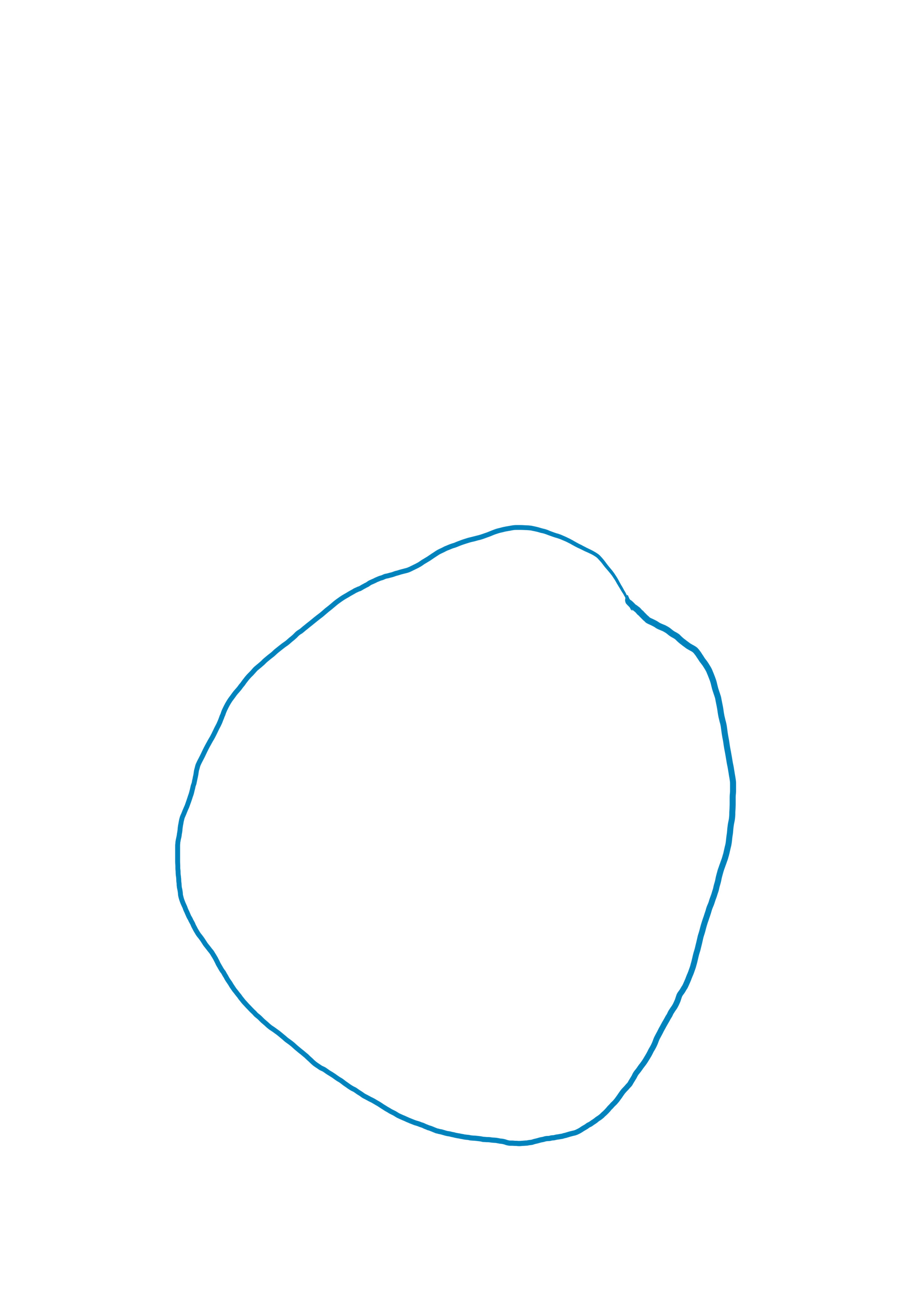
Before continuing to draw the "body" of the heart, we will place the veins, aorta and artery.
You will draw a tube that starts from the right ventricle and goes up while being slightly curved to make the superior vena cava.
You do the same thing on the other side, but instead of making a tube that goes straight you are going to twist it with an angle approaching 90°, this is the pulmonary artery.
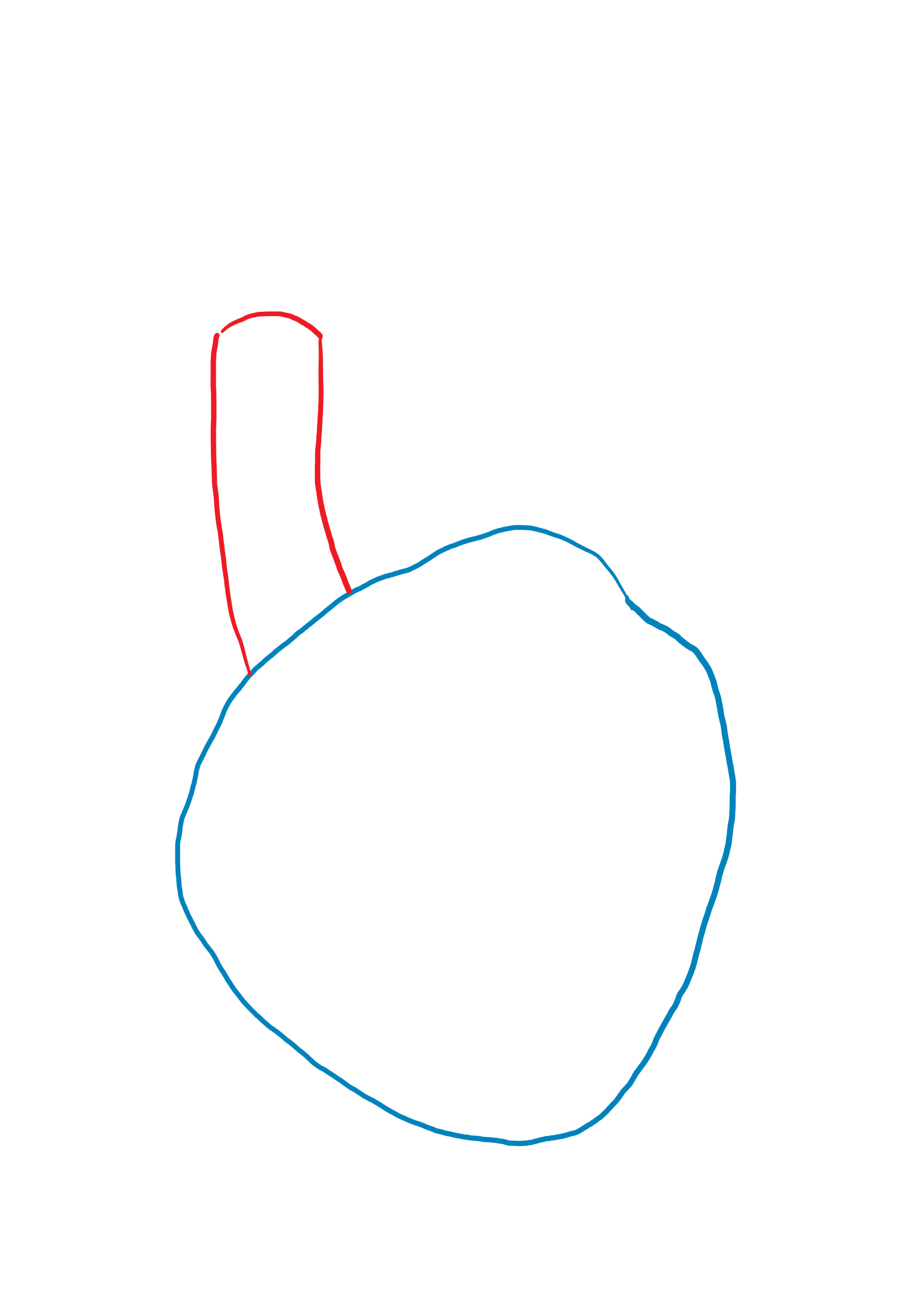
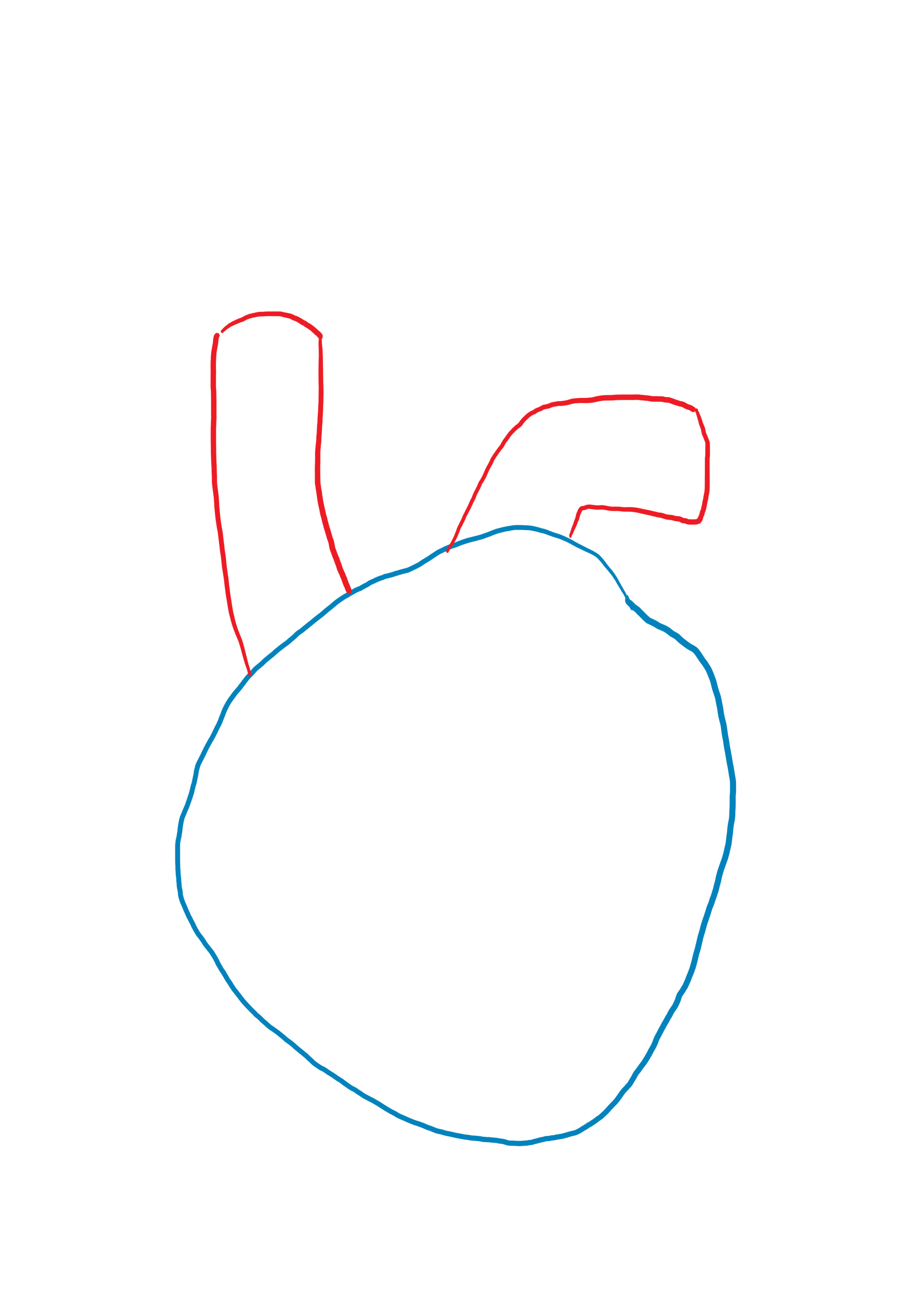
In between the first two tubes, you will draw the aorta. It is simply made up of a first tube folded onto itself and 3 small tubes coming out on top.
And finally, draw a small piece of tube on the left side to make the pulmonary vein.
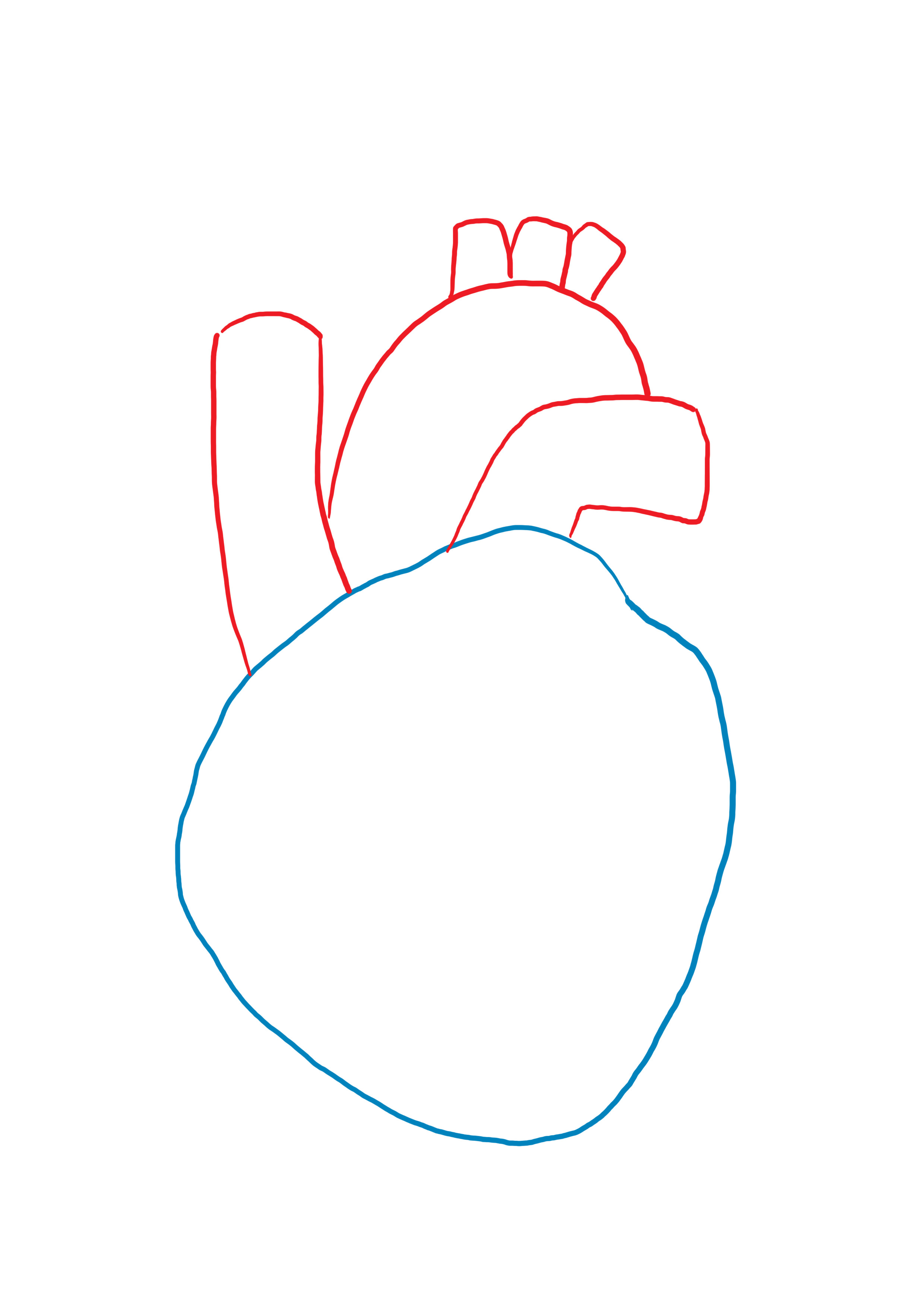
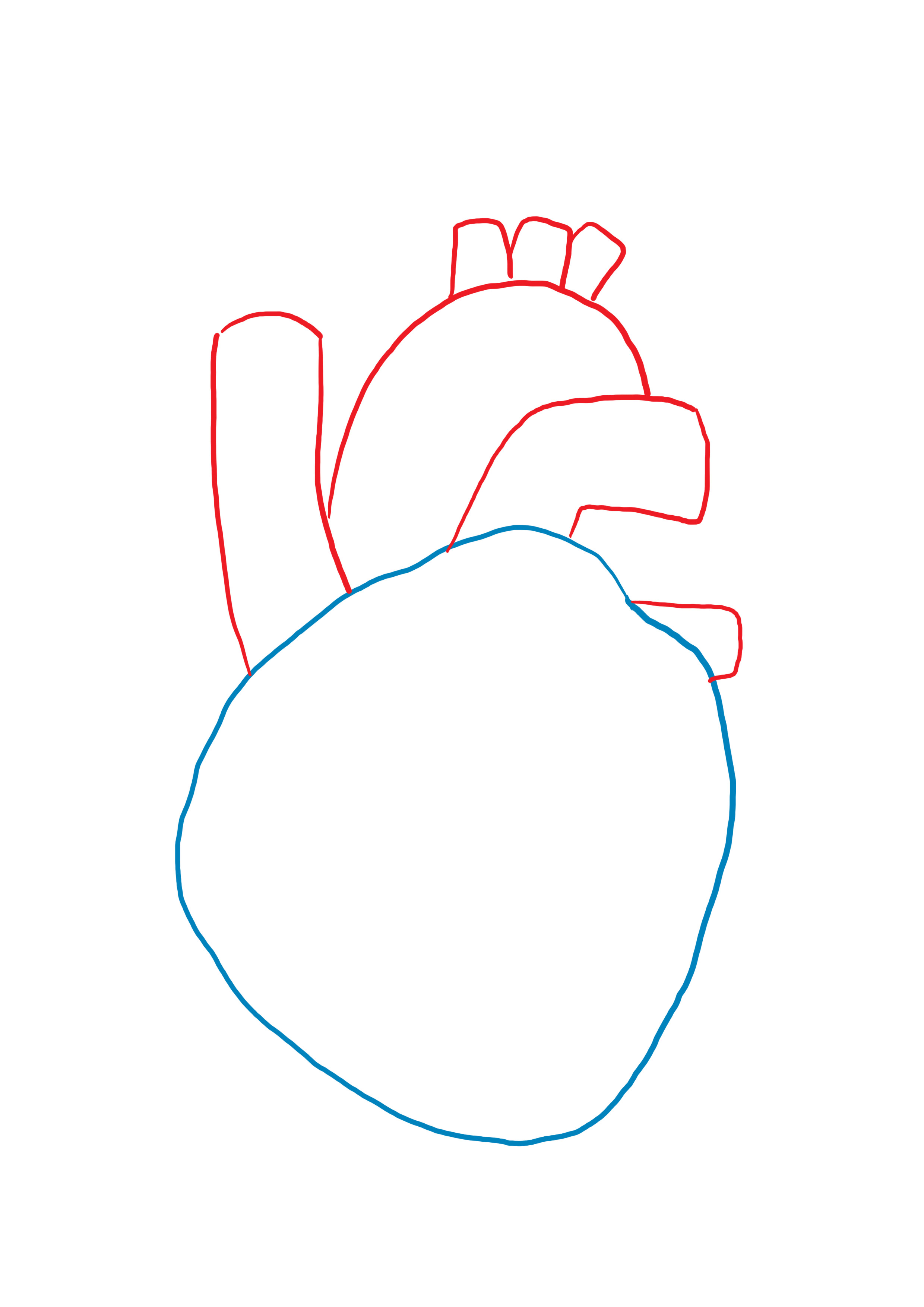
Add the right and left atria of the heart and your base is finished.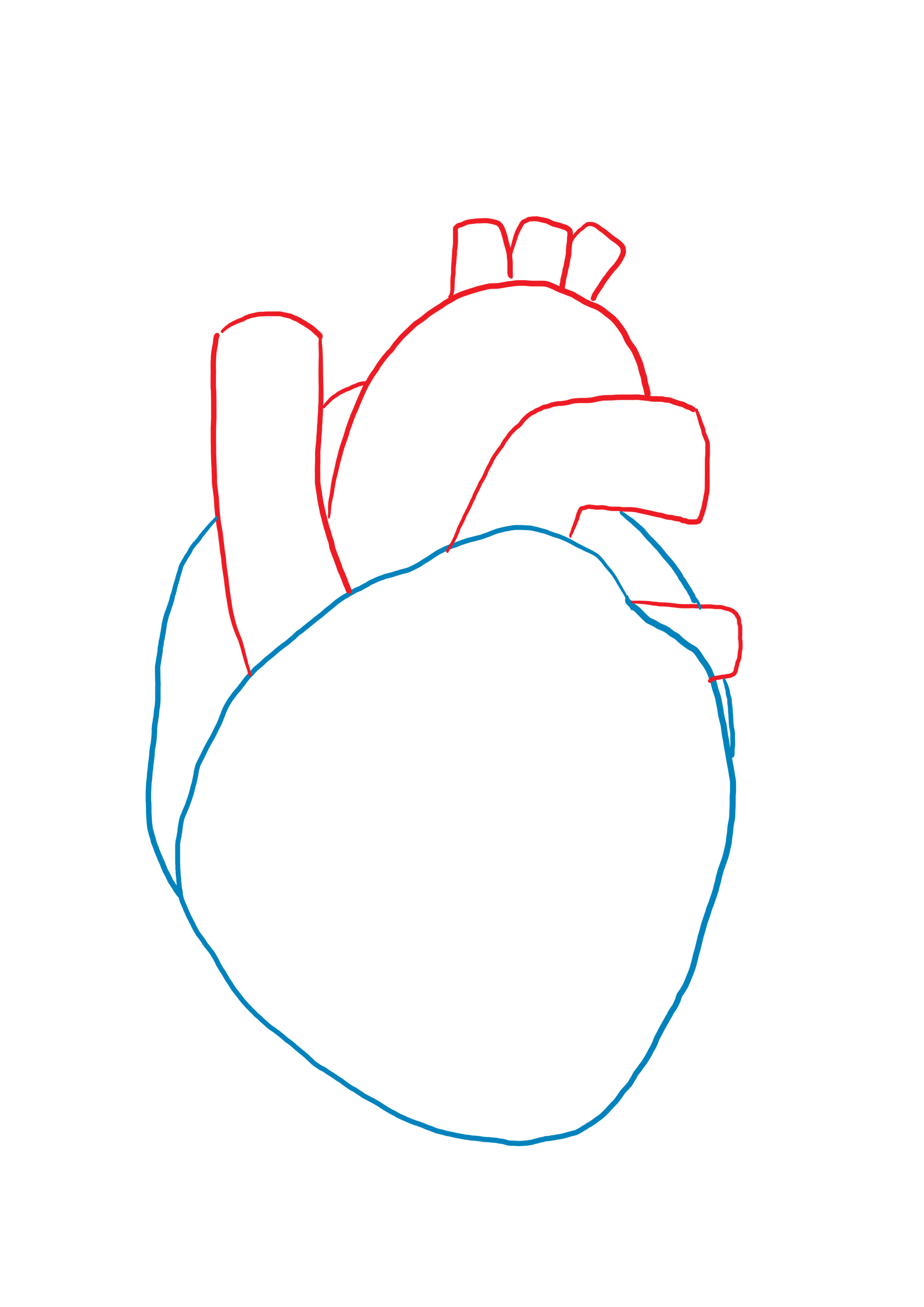
REDRAWING THE LINE TO DETAIL THE ANATOMICAL HEART DRAWING
Start by going over your lines for the right and left ventricle by adding a bit more irregularity to your tracing. Have an almost wavy line.
Then continue drawing the entire heart with an irregular line on the main parts, and a cleaner line on the "tubes".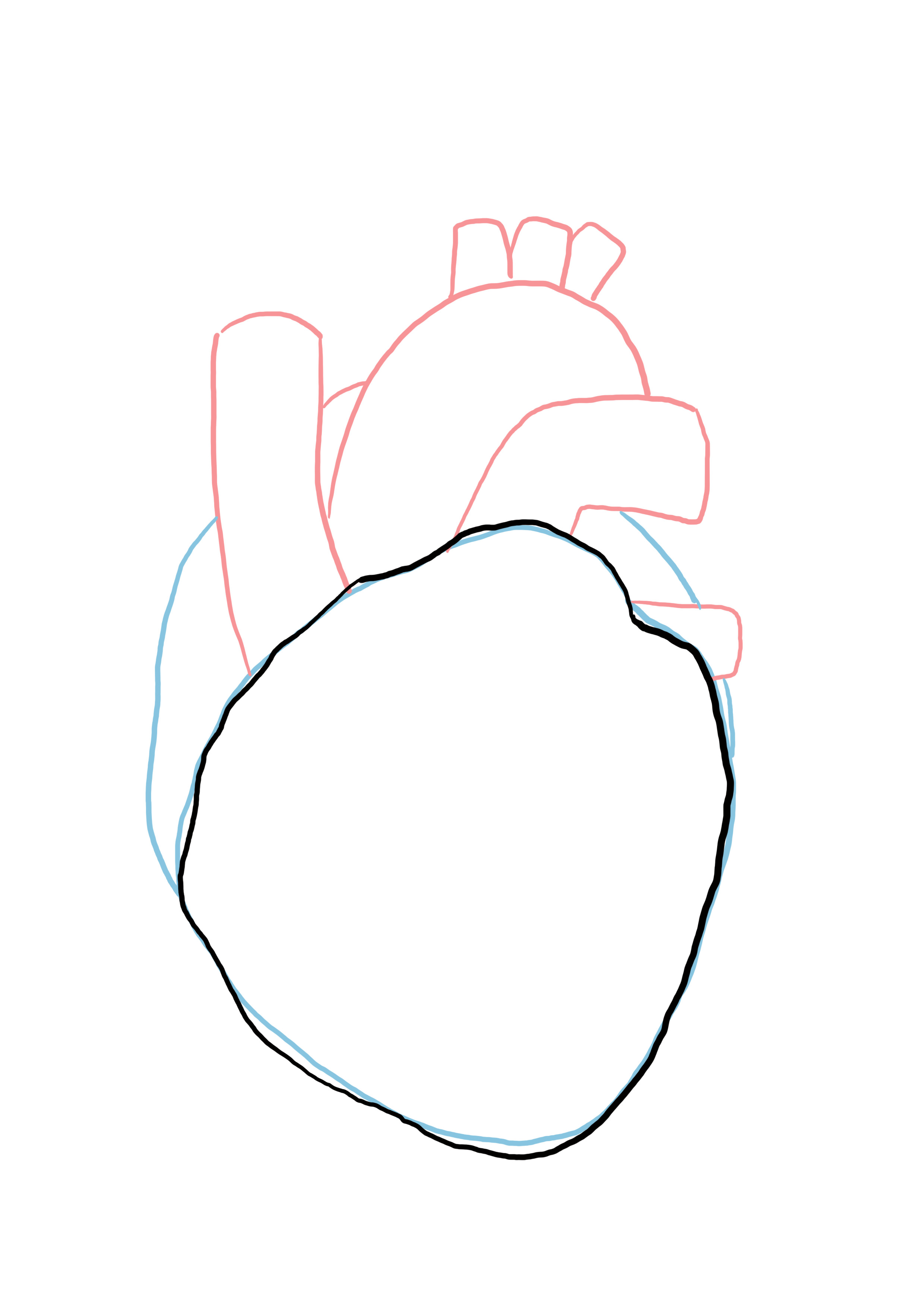
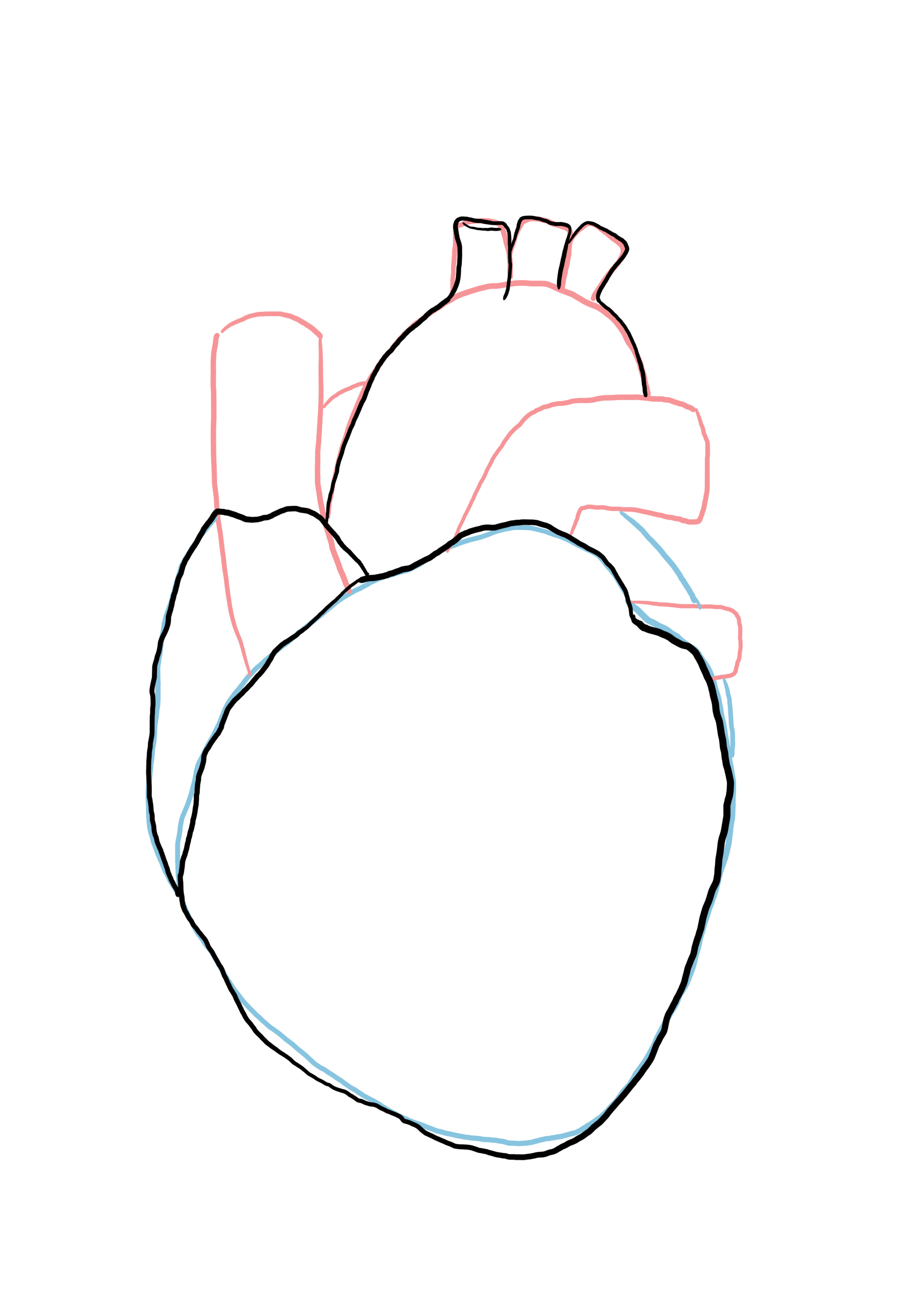
Do not hesitate to vary the thickness of your lines to give some relief to your drawing, and add small details to show the depths of the tubes.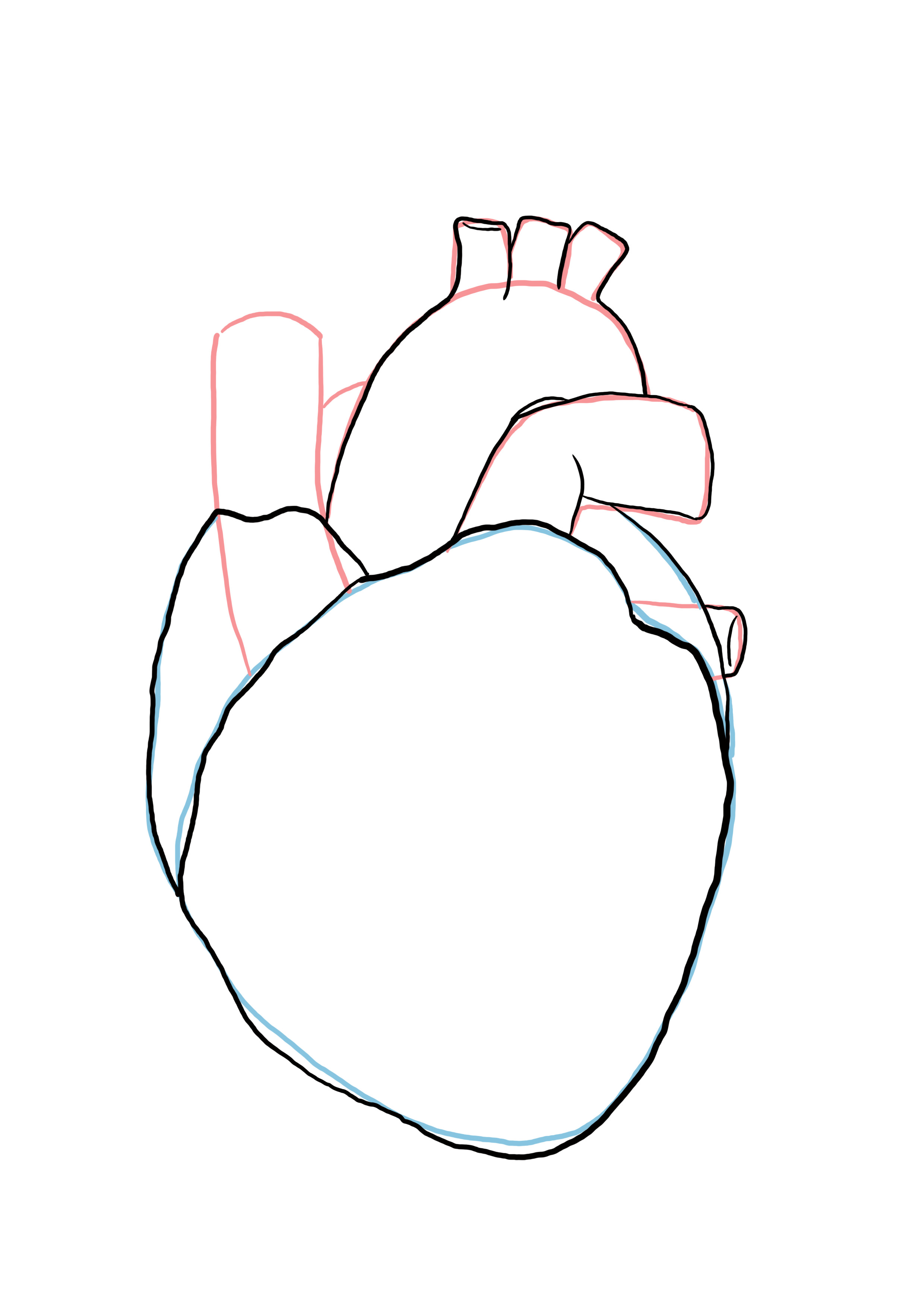
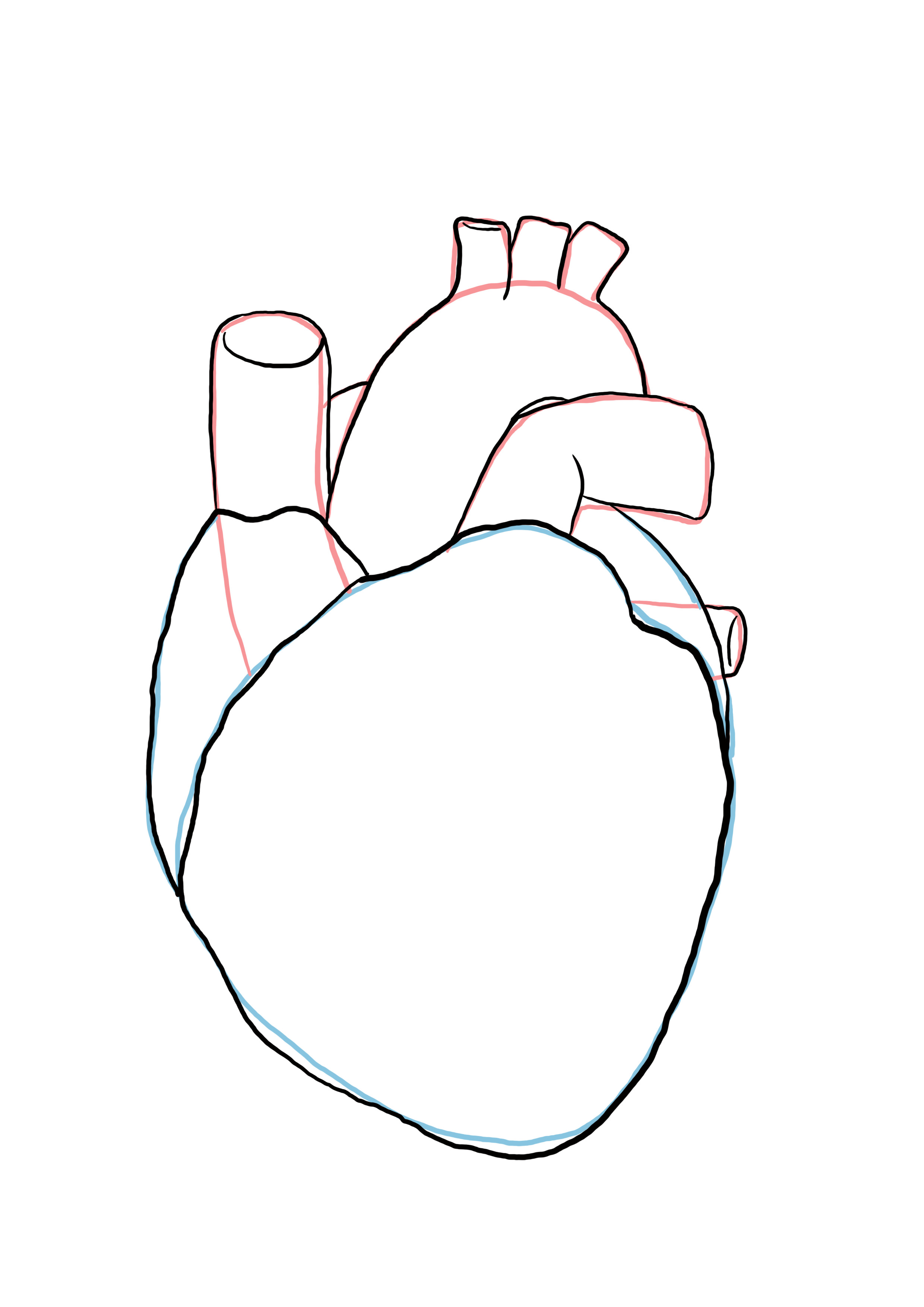
Finally, add some hatching to the heart to give it a "wrinkled" look, then add small veins wandering over the heart.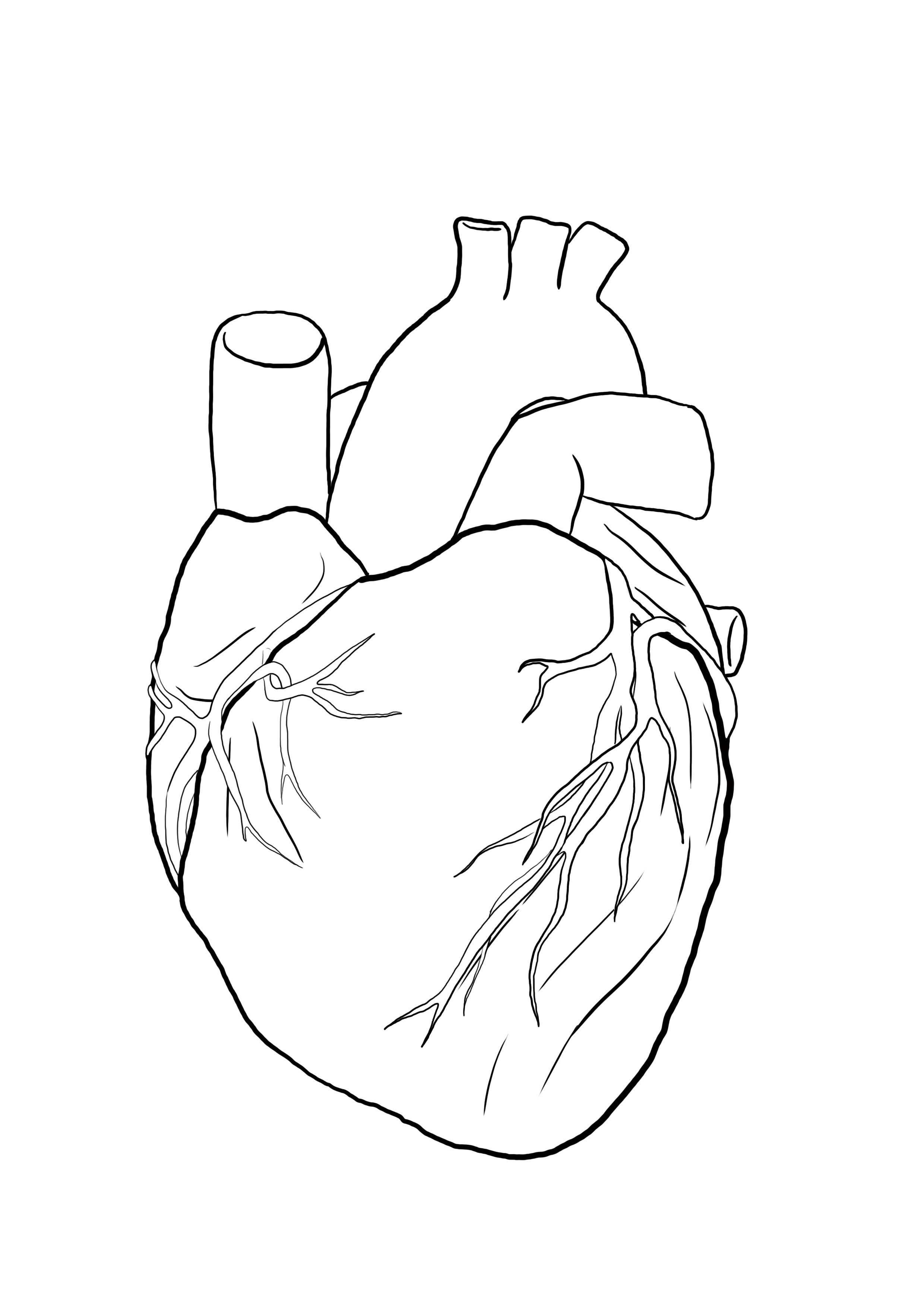
ADDING COLOR TO THE HEART DRAWING
Now that your line is finished, you can move on to color if you wish.
Start by filling your drawing with a medium shade; for the heart, it will be a fairly pale red/brown.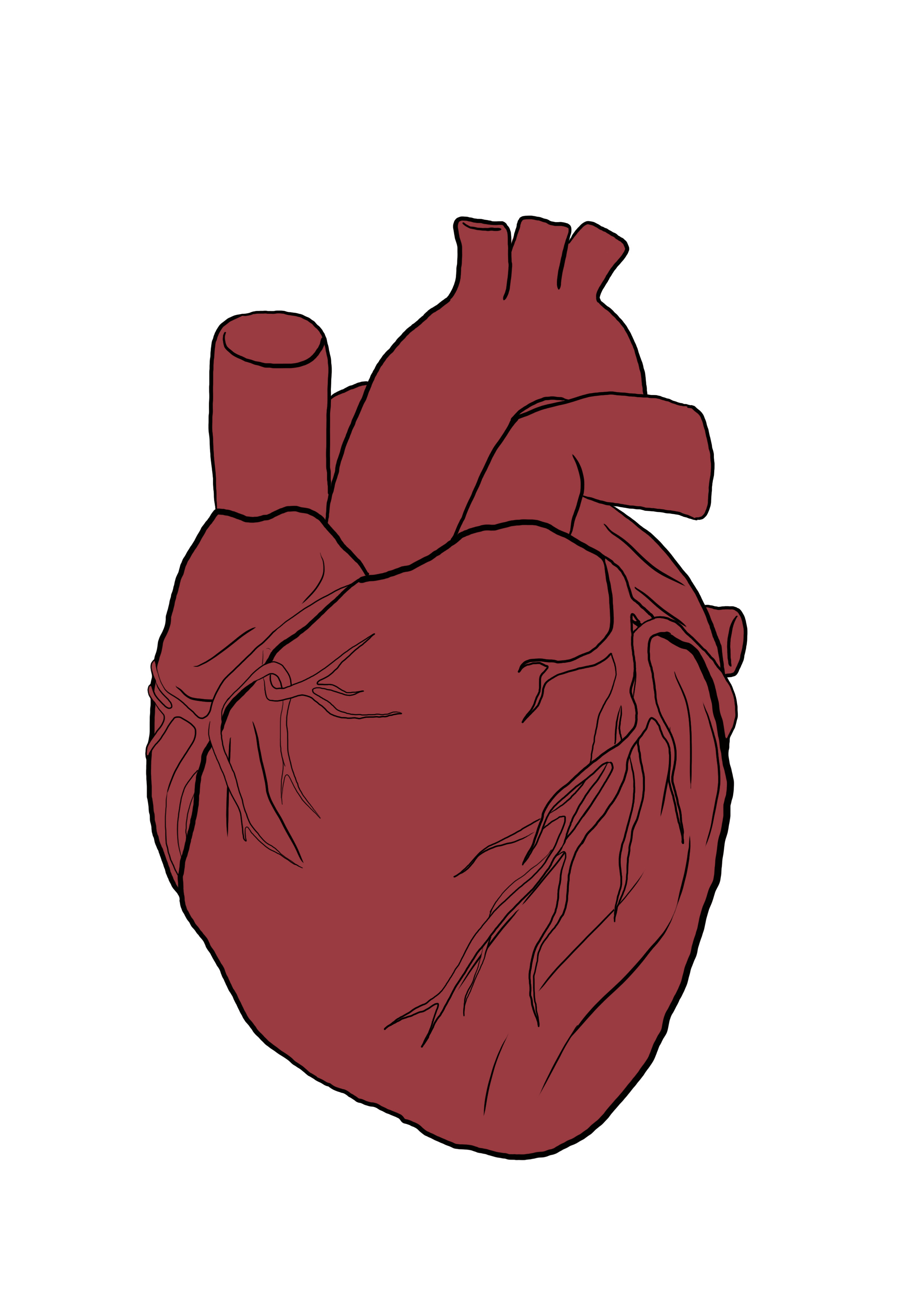
Add shades of color to bring your drawing to life and highlight shadows and lights.
Add very pale pink for the veins, aorta and artery.
For the "body" of the heart, add darker shades of red to mark the recesses, and yellow for the edges.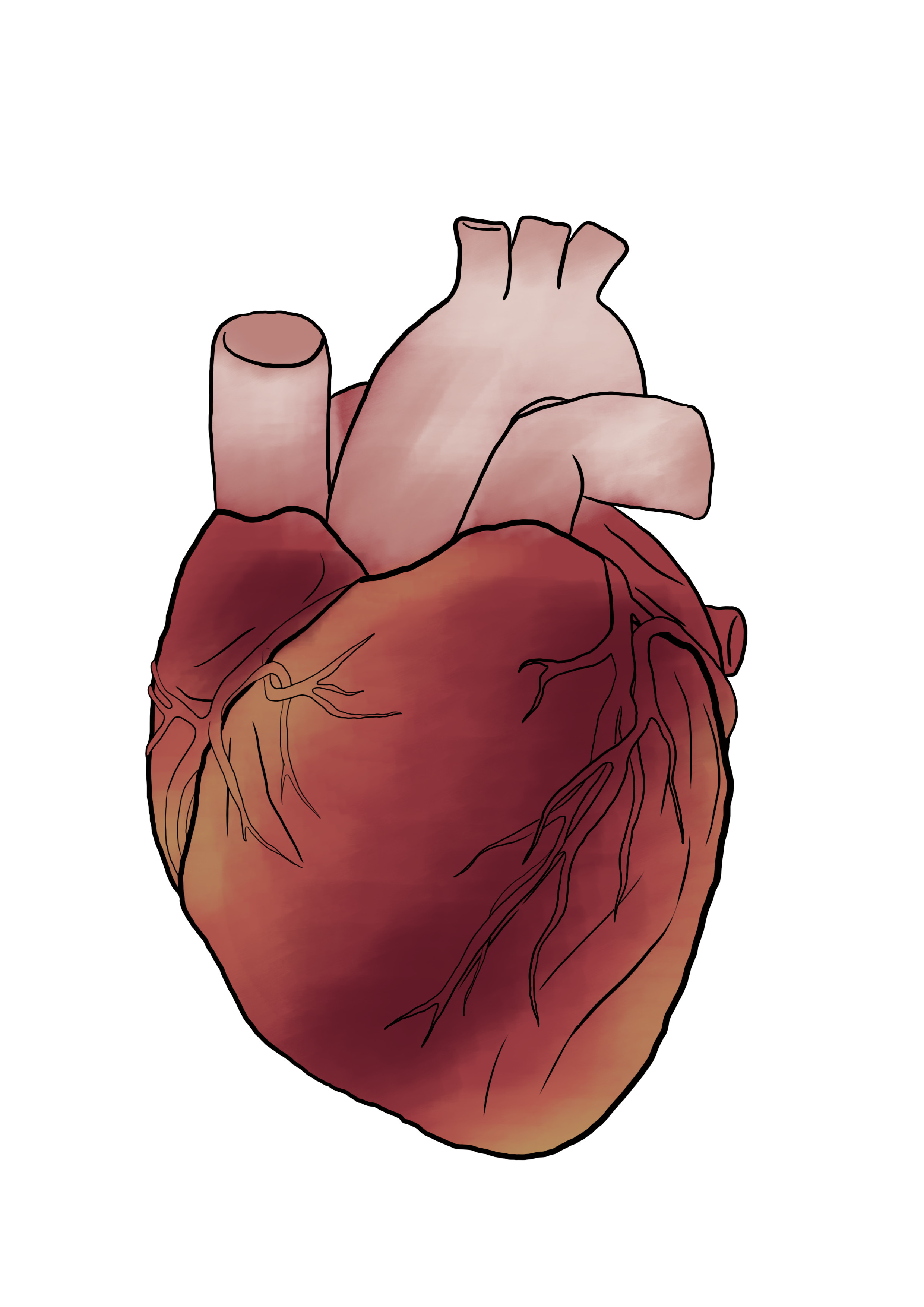
Color the small veins in blue and red and add shadows and light to give them relief.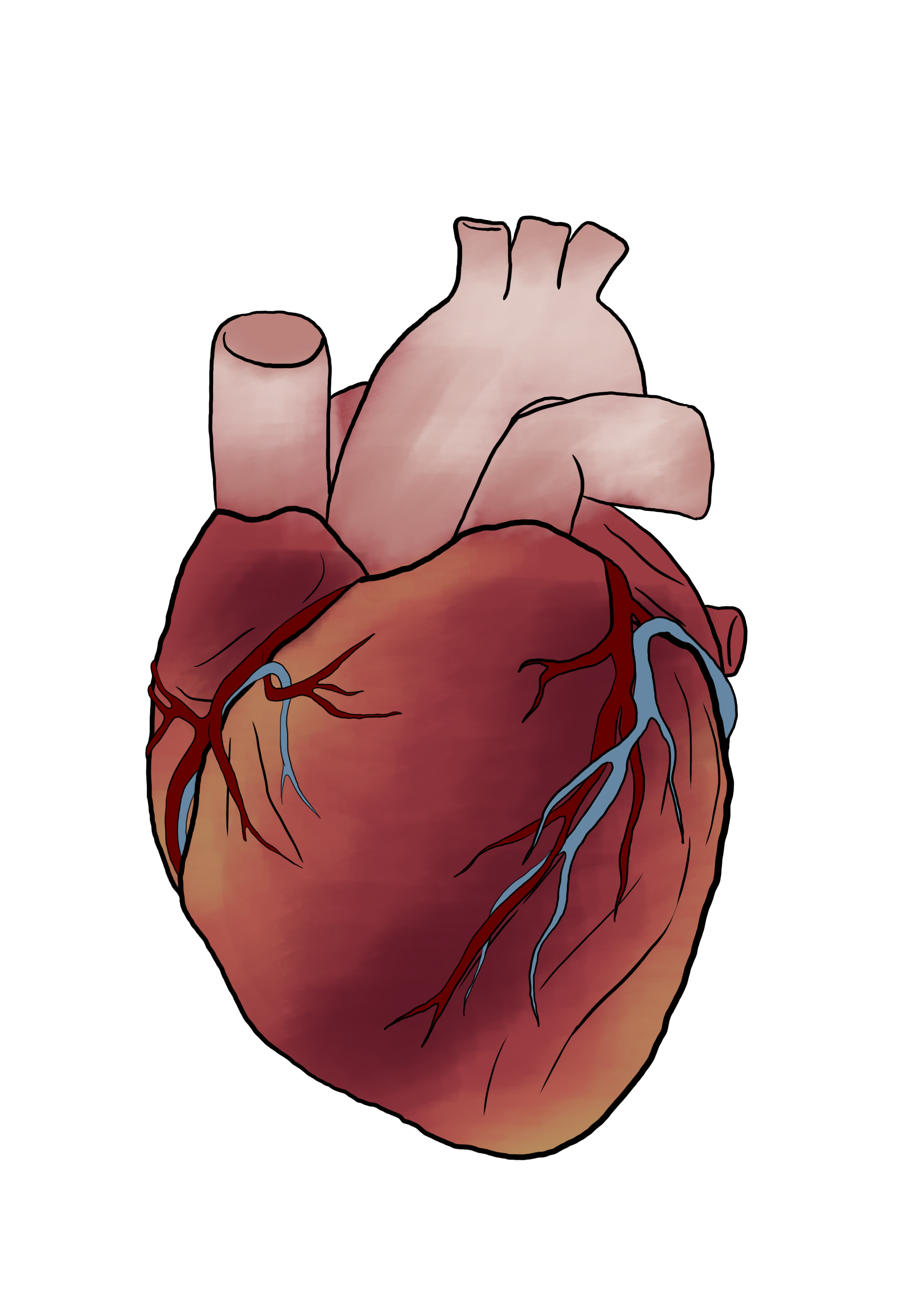
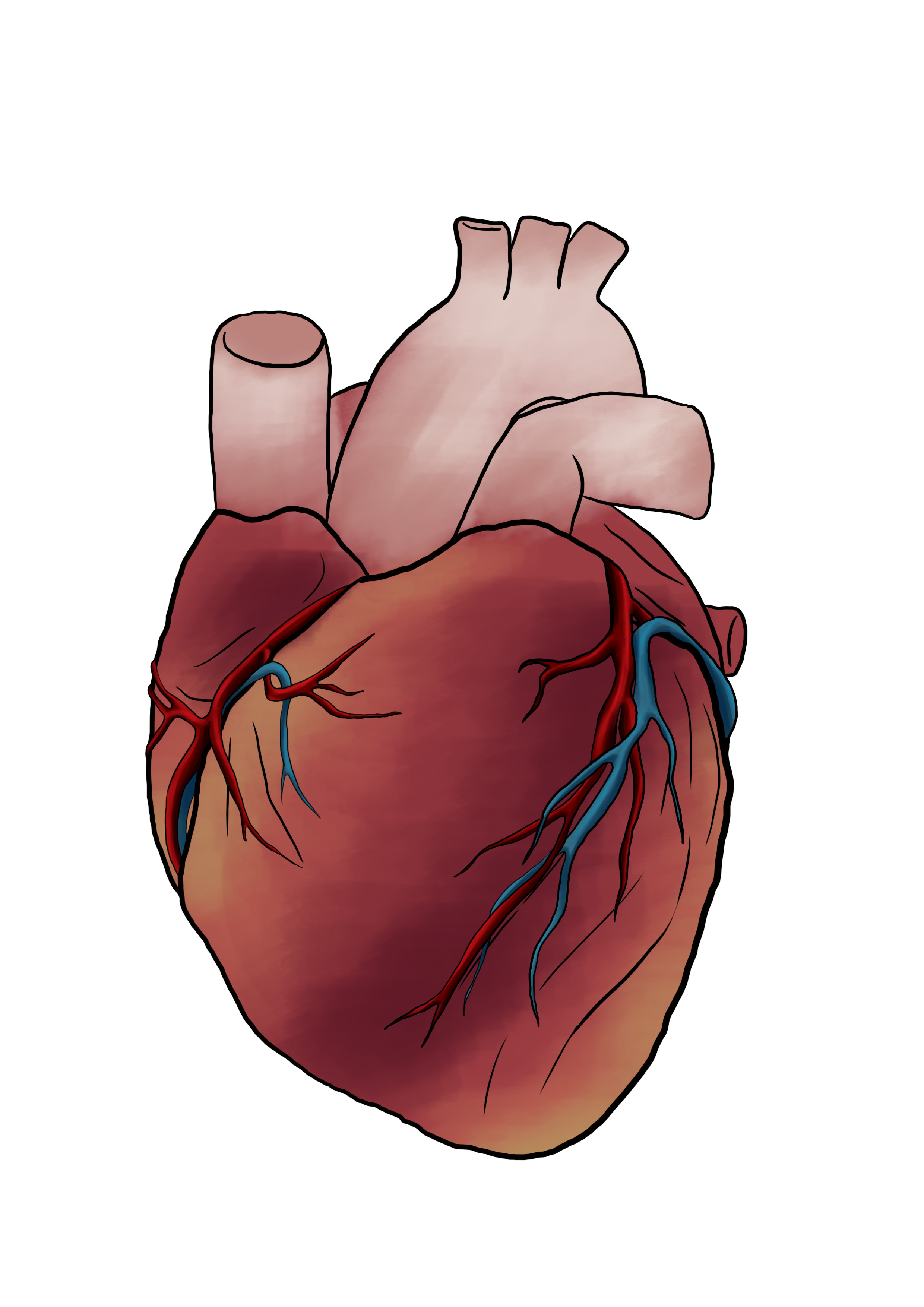
Enhance the contrasts until you are satisfied and you have finished your human heart!
To create a drawing, it's a good idea to explore how the object you want to draw works; a good understanding enables easier drawing. Learn, be curious, the more knowledge you have, the more easily you can reproduce things and later on, without a model!
Writer and illustrator: Coralie

